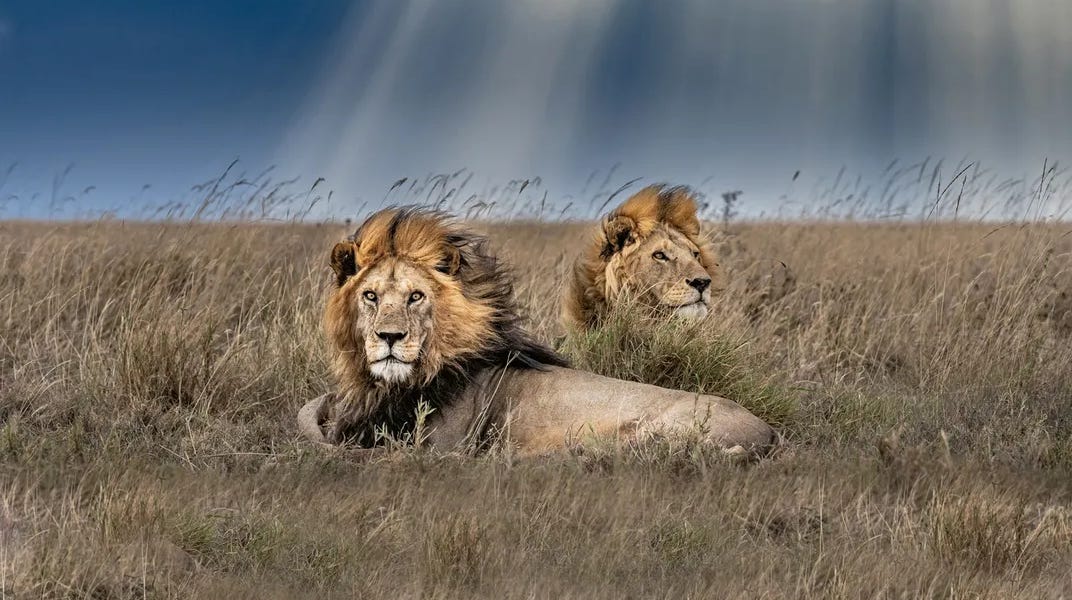The Faroe Islands are like the child that Denmark and Iceland had, but forgot to tell the world about. This group of eighteen small islands receives the least amount of sunshine in the world per year. Constant rain and heavy winds have always battered these lands.
Politically part of Denmark (for now) but fiercely independent in spirit, the Faroes exist in their own bubble of Nordic culture. Here, sheep outnumber humans two to one, villages of colorful houses cling to clifftops like they're holding on for dear life, and the weather can shift from apocalyptic storms to sunny calm in the space of an hour.
Situated between Iceland, Norway and Scotland, the Faroes face the brunt of the North Atlantic weather system. Constant storms and crashing waves have sculpted the volcanic rock over millions of years into some of the most jaw-dropping (and vertigo-inducing) coastlines on Earth. These towering basalt cliffs can reach heights of over 400 meters, dropping straight into churning seas below.
What's most striking is how abruptly the land stops. There are no sandy beaches or gentle slopes here—the islands simply plunge headfirst into the Atlantic. One step you're on grass-covered clifftops, the next you're staring down hundreds of meters of sheer volcanic rock to where waves explode against the base far below.
The weather here is unpredictable, and changes faster than you can put your raincoat on—one minute you're in thick fog, the next you're hit with winds and piercing rain that'll knock you sideways, then suddenly the clouds part to reveal views that'll make your camera work overtime.
Meet the true locals of the Faroes. These wooly sheep have been roaming the islands for over a thousand years, and they outnumber people on the islands. They couldn't care less about your hiking plans and will casually block paths or graze on the edge of 200-meter cliffs like it's the most natural thing in the world.
Faroe's name comes from a combination of fær (sheep) and eyjar (islands).
Unlike their farm-bound cousins elsewhere, Faroese sheep roam completely free across the islands, somehow always managing to find the most photogenic spots for an impromptu rest. This fellow right here is the only one that gave me any sort of attention. Otherwise, they are all busy grazing on all the grass they could ever ask for.
Why fight the landscape? For over a millennium, islanders have been topping their huts with birch bark and soil and let the grass grow wild. They act as insulation, and the thick roots are an excellent waterproof seal against the weather.
The grass grows quickly and does need tending every once in a while. In typical Faroese fashion, the solution is simple: put a sheep on top for an afternoon.
On the northern tip of Kalsoy lies the Kallur lighthouse. Like most regions on the islands, the land is privately owned. Hiking usually incurs a modest fee paid at the trailhead to the land owners, and the rest is up to you. Trails are just sheep paths, worn smooth by countless hooves over years rather than any official trail maintenance.
There are no guardrails, no warning signs, and definitely no liability waivers - just you, the weather, and whatever route the sheep decided made sense. The approach to Kallur is particularly gnarly, following a knife-edge ridge with steep drops on both sides before reaching the lighthouse perched dramatically on sea cliffs.
In No Time To Die (2021), Daniel Craig's James Bond meets his end at the villain's lair, which happened to be here on Kalsoy. The Faroese then followed through with the obvious next step.
.png)



